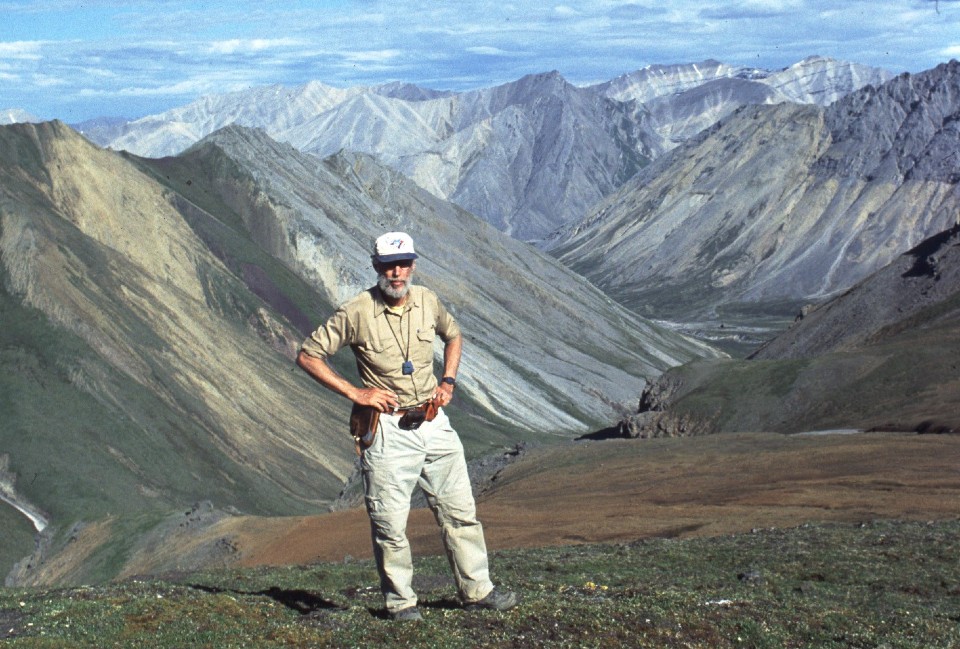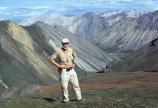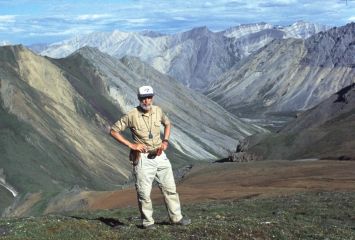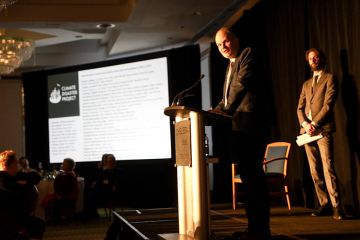Paul Hoffman wins Kyoto Prize for early Earth revelations
- Nicole Crozier

Paul Hoffman has been steadfast in his explorations of hypotheses that other scientists have ignored. Despite backlash against his research at various times throughout his career, the geologist and adjunct professor in UVic’s School of Earth and Ocean Sciences has made groundbreaking achievements regarding global freezing and plate tectonics in the deep past. On June 14, 2024, Hoffman was awarded the Kyoto Prize in Basic Sciences by the Inamori Foundation for his profound influence on our understanding of Earth’s early history.
The Kyoto Prize is an international award presented to individuals who have made significant contributions in the fields of science and technology, as well as the arts and philosophy. The prize is widely considered to be the Japanese equivalent of the Nobel Prize and comes with prize money of 100 million yen (approximately $850,000 CDN). Hoffman is the first geologist and third-ever Canadian laureate.
Dr. Hoffman’s immense field research spanning 60 years in Arctic Canada and Sub-Saharan Africa is crucial to our understanding of the Earth’s surface, knowledge that students now, and for many years to come, will build upon in their academic pursuits.”
—Lisa Kalynchuk, UVic vice-president research and innovation
Hoffman began his career as a research scientist for the Geological Survey of Canada. Over two decades later, at the age of 52, he joined UVic’s School of Earth and Ocean Sciences and started a second career as an academic. Hoffman began his research into snowball Earth during the two years he spent at UVic and now considers this period to have been hugely influential on his career. He continued that work during his 14-year appointment as the Sturgis Hooper Professor of Geology at Harvard University.
Pursuing snowball Earth
The snowball Earth hypothesis was originally created to explain evidence that glaciers had previously existed at sea level in what are now the warmest parts of the world. The theory proposes that there have been times in Earth’s history where the planet’s surface was nearly entirely frozen, with no liquid water exposed to the atmosphere. Initially, little attention was given to this idea, as scientists could not imagine how the Earth might come back from such a glaciation.
Despite being skeptical himself, Hoffman recognized that the theory was testable and set about conducting those tests. At the time, he encountered fierce resistance from other scientists.
At the beginning of this work, and especially after I published my 1998 Science paper, other scientists thought I was wasting my time, and even that I was bringing the science into ill repute. But I believed that if I argued in favour of the hypothesis, I would find out if it was wrong sooner. But if the idea was right, the ramifications would be profound.”
—Paul Hoffman, geologist and adjunct professor in UVic’s School of Earth and Ocean Sciences
Hoffman conducted much of his snowball Earth research through geological surveys in Namibia. By studying glacial deposits from 600 million years ago, he determined that signs of life ceased completely immediately after glaciation—a result consistent with the snowball Earth hypothesis. Hoffman published this research in a landmark 1998 Science paper, which increased interest in the notion of a snowball Earth—and also increased opposition.
“During this time, I questioned my advocacy for snowball Earth every day,” says Hoffman."There’s nothing more disastrous for a scientist’s reputation than to stick with a bad idea for too long. Conversely, there’s nothing worse for the advancement of science itself than to give up on a good idea too soon.”
The field of geology can be grateful that Hoffman didn’t give up too soon. Today, snowball Earth is widely accepted, and Hoffman has taken it even further, demonstrating that the snowball Earth condition occurred twice during the period 720 to 640 million years ago. These drastic environmental changes on a global scale may have driven the rapid diversification of life in the Cambrian period approximately 520 million years ago.
New ground with plate tectonics
Long before the snowball Earth hypothesis had a name, Hoffman was making waves studying plate tectonics, a theory that the Earth’s rock crust is made up of plates that move. It explains how major landforms are created by Earth’s subterranean movements, and many other phenomena including volcanoes, earthquakes and mountain-building events. The theory became widely accepted in the 1960s, after geological evidence that plate tectonics existed during the Paleozoic era (541 to 252 million years ago).
Hoffman’s research, first as a graduate student and then with the Geological Survey of Canada, stretched the timeline back even further, showing that plate tectonics existed as far back as the Precambrian era (four billion to 541 million years ago). Using extensive and detailed field surveys in Arctic Canada, he demonstrated that the core of the current North American continent formed two billion years ago. At the time, this finding caused a stir in the geology community.
“Precambrian geologists were threatened by the idea that these already-studied younger geological processes could also be applied to the Precambrian era, so they initially resisted the findings,” says Hoffman. “Today, it is widely accepted that plate tectonics existed as far back as the first half of Earth’s history.”
Hoffman’s ongoing plate tectonics work has also revealed that the supercontinent cycle, in which giant landmasses repeatedly form and break up, has likely taken place four or five times throughout history. Hoffman gave one of the supercontinents, Nuna, its name, and has also given the name “Amasia” to the next predicted supercontinent.
What’s next for Paul
Hoffman retired from Harvard in 2008, but had no intention of stopping his work. An active adjunct professor in UVic’s School of Earth and Ocean Sciences since 2011, Hoffman has returned to his research roots, continuing work on the snowball Earth hypothesis, taking students into the field and regularly attending department seminars. His textbook about snowball Earth is set to be released in the spring of 2025 and he has also teased a new theory that explains how phototrophs, organisms that use light as their energy source, managed to survive snowball Earth.
Perhaps a third controversy is in the works for Hoffman.
Photos
In this story
Keywords: award, environment, earthquake, international, administrative, climate, research, strat plan category of people, place and planet, SDG15, life on land
People: Paul Hoffman, Lisa Kalynchuk





